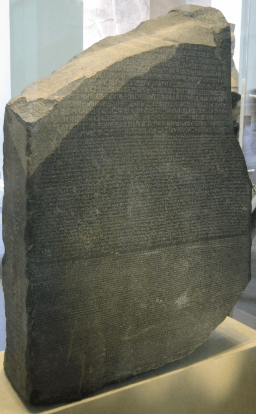National Prairie Day
National Prairie Day is observed next on Saturday, June 6th, 2026 (183 days from today).

National Prairie Day honors the beauty and the ecological value of ecosystem. Spanning more than a dozen US states and several Canadian provinces, the North American savanna is a vast grassland that offers more beauty and biodiversity than most people realize. With its endlessly sloping plains and productive soils, the savanna has been a precious place for farming and ranching for thousands of years. Today, only 1% of the tall grasslands in the United States are still intact through cultivation or development.
History of National Prairie Day
The United States is home to a dazzling array of geography and environments. Some, like the towering redwoods of California or the majestic cascades of Niagara Falls, are known worldwide as media darlings and tourist hotspots. Other ecosystems, like the humble grasslands that cover much of the interior of the United States, receive less praise but play a vital role in the nation's development.
Defined as flat grassland with a mild climate and derived from the French word "meadow", "prairie" is roughly synonymous with the expansion of the borders of the United States. Surrounded by the Great Lakes and the mighty Rocky Mountains, the North American savannah stretches over 15% of the continent's land area. Other examples of similar grasslands around the world include grasslands in Argentina, the steppes of Central Asia, and llanos in Venezuela.
Meadows are much more than eye contact. In fact, the tall grass prairies are home to the most biodiversity in the Midwest and are home to dozens of rare plant and animal species, including bison, antelope, elk, and dogs, wolf and bear.
Indigenous savannas face extinction as more and more land is converted to agricultural and ranching uses. Due to the fertile, rich soil, grasslands are prized for agricultural use. Around the world, nearly three-quarters of agricultural areas are in grasslands. With only 1% of the tall grasslands in the United States untouched, the U.S. tall grasslands are currently one of the most endangered ecosystems on the planet. The Missouri Prairie Foundation launched National Prairie Day in 2016 aiming to raise public awareness and appreciation for the nation's grasslands. The organization seeks to protect and restore native grasslands by promoting responsible management, supporting acquisition initiatives, providing community education and outreach.
National Prairie Day provides an opportunity to educate the public about conservation, conservation and restoration. It also teaches us about the history, wildlife, and habitat of the grasslands. Understanding grasslands means looking beyond what often seems simple at first and understanding each of the life forms that flourish within it. It also means understanding the complex systems we can learn from and secure our future. The natural beauty of the steppe is also breathtaking. Today “waves of amber grain” are created from the fertile soil of these oceanic grasslands. They were once tall enough to hide a man on horseback! The prairie has inspired paintings by Harvey Dunn in South Dakota, poetry by Walt Whitman, and books by authors like Laura Ingalls Wilder of Missouri.
Measurable benefits among grasslands include:
Protect water quality and quantity:
- The steppe absorbs up to 7 inches of rain without flowing.
- The savannah plants are adapted to drought; It's like having drought insurance.
- They provide upstream protection.
- Prairies also increase water infiltration and production, increasing water availability by reducing reservoir erosion and sedimentation.
- Because fertilizers, pesticides, and herbicides are not used in these natural habitats, they increase water quality.
- Rainwater management on the savanna acts as a sponge limiting soil erosion and flooding.
Protect soil quantity and quality:
- Microorganisms in pasture soil can also reduce the amount of synthetic chemicals used in agriculture.
- The root system of native prairie grass holds the soil in place to prevent it from running off.
- An acre of grassland can store more than a ton of carbon per acre per year.
- Native plants with roots up to 15 feet deep act like a sponge, absorbing up to 7 inches of rain without waterlogging.
Birds, native pollinators and wildlife conservationists:
- Native bees were found to be 40 times more efficient pollinators than honey bees.
- Prairies support pollination of adjacent farms through native pollinators.
- They provide habitat for migratory waterfowl, seabirds, waterfowl and songbirds.
- Prairies protect animals that are adapted to wide open spaces, with few trees.
Energy independence through biofuels:
- Prairie biomass can be harvested for renewable energy, generating natural gas.
- Conservation of North American Cultural and Natural Heritage:
- Prairies provide the opportunity to learn rudimentary skills.
- They have the basic characteristics of Native Americans.
- They are also very rich in housing history.
Protect plant biodiversity:
- Compliments give management by setting fire to grazing.
- Planting pastures can be considered a form of drought insurance because they are adapted to drought, grazing, and fires.
- Forbs (native wildflowers) are of particular importance as a food source for insects and native wildlife.
- Endangered plant species have not been studied for being medicine.
- Prairie is full of natural seed shops and offers breeding of endangered species.
Some interesting truths about prairies
- 'The Prairie Hunters'
During the 1800s, when Americans began the long journey westward, their covered wagons were often referred to as 'steppe wagons.'
- Dogtown
Prairie dogs live in a vast network of underground burrows known as 'towns', which can cover hundreds of acres and are home to thousands of prairie dogs with complex social relationships. .
- Where does the buffalo roam?
When Europeans first arrived in North America, as many as 60 million bison roamed the plains - in 1885, there were fewer than 600 left.
- Carbon Hero
Prairie can help combat climate change - an acre of intact grassland can absorb about a ton of carbon per year.
- Rise from the ashes
In grasslands, wildfires can actually be a healthy thing with more than 75% of their biomass underground, grassland plants are well suited to survive and thrive after fires.
How to celebrate National Prairie Day
- Learn about the savannah
Do a little research to learn about this important American ecosystem and its role in our nation's cultural and economic development.
- Donate to a conservation group
If you're concerned about the loss of the American prairies, donate to a prairie conservation group to support their work.
- Plan a visit to a famous savannah
Do you live near grasslands? Try to find the grassland closest to you and plan a visit.
Observed
National Prairie Day has been observed the first Saturday in June.Dates
Saturday, June 1st, 2024
Saturday, June 7th, 2025
Saturday, June 6th, 2026
Saturday, June 5th, 2027
Saturday, June 3rd, 2028
Founded by
Missouri Prairie Foundation on September 14th, 2015


